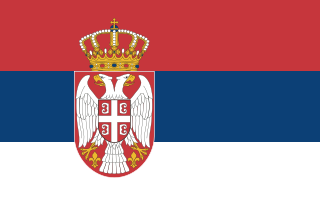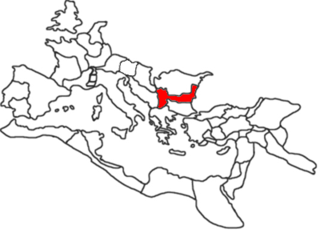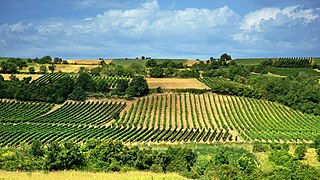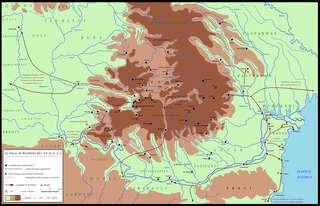The Timachi were a Thracian tribe in living by present-day Timok, Serbia, then part of Moesia Inferior (87 AD). It[ clarification needed ] may have been an artificial creation by the Romans. [1] In the 1st century before Claudius conquest of Thrace, Pliny the Elder lists them as one of the Moesian tribes alongside Dardanians, Celegeri, Triballi and Moesi. [2] [3]

Serbia, officially the Republic of Serbia, is a country situated at the crossroads of Central and Southeast Europe in the southern Pannonian Plain and the central Balkans. The sovereign state borders Hungary to the north, Romania to the northeast, Bulgaria to the southeast, North Macedonia to the south, Croatia and Bosnia and Herzegovina to the west, and Montenegro to the southwest. The country claims a border with Albania through the disputed territory of Kosovo. Serbia's population is about seven million. Its capital, Belgrade, ranks among the oldest and largest citiеs in southeastern Europe.

Claudius was Roman emperor from 41 to 54. A member of the Julio-Claudian dynasty, he was the son of Drusus and Antonia Minor. He was born at Lugdunum in Gaul, the first Roman Emperor to be born outside Italy. Because he was afflicted with a limp and slight deafness due to sickness at a young age, his family ostracized him and excluded him from public office until his consulship, shared with his nephew Caligula in 37.
The territorial unit of the Timachi was small, limited to a single valley system around the Danube where each tributary was guarded by an auxiliary garrison supervised by praefecti. [1]

The Danube, known by various names in other languages, is Europe's second longest river, after the Volga. It is located in Central and Eastern Europe.
They have received or given their name to the Timok region (TIMACUS). [3]
The Celegeri and Timachi were replaced with the Romanized tribes of Tricornenses and Picenses respectively. [2] The Picenses of Pincum ( Gradište ) "replaced" the Timachi. [3]
Celegeri were a Celtic tribe, together with the Dindari a branch of the Scordisci that migrated to Illyria after the Gallic invasion of the Balkans in 279 BC. They inhabited Moesia Superior, and are registered by Pliny as living between the Dardanoi and the Triballi. They appear in north-westernmost Thrace in the 1st century BC. They were replaced by the Romanized Thracio-Celtic Tricornenses.
The Tricornenses of Tricornum were a Romanized Thraco-Celtic artificially created community by the Romans that replaced the Celtic Celegeri. The inhabitants of Tricornum were Celtic and Thracian, attested by epigraphic sources. After 6 AD, the Tricornenses were one of the four units of Upper Moesia alongside the Dardani, Moesi and Picenses. The ceremonial parade armour found at Ritopek belonged to a Tricornian soldier of Legio VII Claudia, dating to AD 258.

Veliko Gradište is a town and municipality located in the Braničevo District of the eastern Serbia. It is situated the right bank of the Danube river and left bank of the Pek river. In 2011, the town has a total population of 6,204, while the municipality has 17,610.













